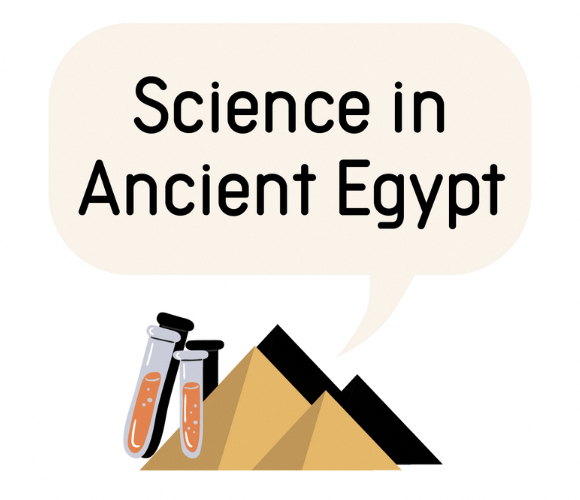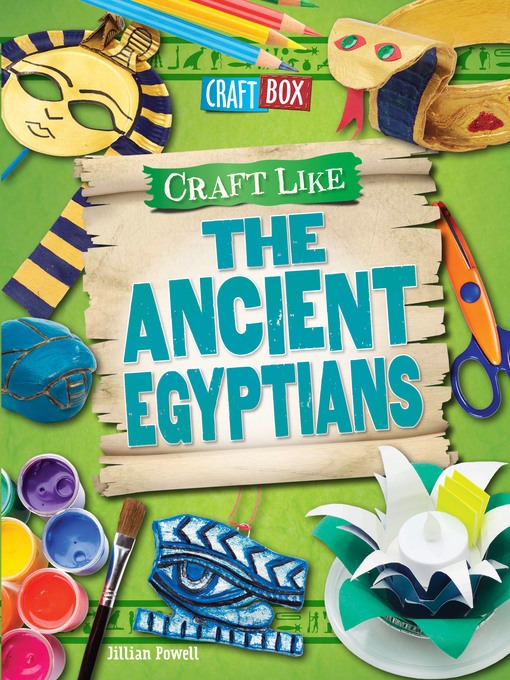Science in Ancient Egypt
Tweens
by LearnX Science

Science in Ancient Egypt
It is easy to believe that ancient civilisations had little understanding of the fields of Science, Technology, Engineering, and Mathematics (STEM), when we hear stories from their time where for example, people believed the Sun moved around the Earth.
However, the wonders and impressive cultural artefacts that have been left behind show a different story and are evidence of some great thinkers who applied strong STEM principles.
The Pyramids of Giza is one of the most impressive engineering marvels from Ancient Egypt.
Ancient Egypt
Standing proudly against the sandy backdrop of the Western Desert in the city of Giza, these massive structures of limestone were assembled almost 4,600 years ago using simple machines.
And the wonders don’t stop there; within the pyramids are passage systems leading to chambers and grottoes that house the mummified remains of royalty, as well as priceless treasures and art.
But, you don’t have to set off on an expedition to look into the pyramids.
Take a guided trip through the twisting passageways of the Great Pyramid of Giza right from the comfort of your own home in this 360-degree video by the BBC. Click and drag the video around to check out every nook and cranny of the pyramid!
Before a body could be laid to rest in these magnificent pyramids, they needed to be mummified. To do so, embalmers in Ancient Egypt used basic scientific principles of osmosis to preserve the bodies.
After removing the internal organs and setting them aside in jars, the body was packed with natron, a salt found in dried riverbeds (Source: How STEM Built the Egyptian Empire by Xina M. Uhl). It disinfected and dried out the corpse, keeping it from decaying.
You can watch this process by conducting a similar experiment with an apple. Follow this step-by-step tutorial by Da Vinci TV to make your very own Apple Mummy.
Ancient Egyptians also engineered irrigation canals to help grow a variety of plants like barley, onions, garlic, lettuce, and sesame (Source: How STEM Built the Egyptian Empire by Xina M. Uhl)
However, the most prized plant was the papyrus plant, whose fibres were used to create a type of paper. The stalk was peeled into long strips, and then pressed and dried into sheets.
While you may not have easy access to the papyrus plant today, you can create something similar with any clean brown paper bag you might have at home, then use it in a variety of crafts.
-
Check out the book recommendations below!
How STEM built the Egyptian Empire
Authors: Xina M. Uhl
Call No.: Y 609.32 UHL
Publisher: The Rosen Publishing Book, 2020
Available as a physical copy only. (Find a copy at the public libraries via the NLB Catalogue!)
Majestic pyramids, frightful mummies, intricate hieroglyphics, and vivid tomb paintings carry the echoes of ancient Egypt through thousands of years into the present. Science, technology, engineering, and mathematical or STEM achievements lay at the heart of the Egyptians’ grandeur.
Their brilliant use of basic tools and machines in massive construction projects, the preservation of human remains, and agricultural inventions that remain useful in modern times are just some of the subjects investigated in this volume. Rich in historical context, readers are given a solid understanding of how STEM shaped one of the world’s most fascinating empires.
Synopsis from Rosen Publishing.
Craft like the Ancient Egyptians
Author: Jillian Powell
Call No.: J 745.5 POW
Publisher: PowerKids Press, 2018
Also available as an eBook on NLB Overdrive.
With a flair for fashion and a love of cats, the ancient Egyptians weren’t so different from us—except for the mummies and sarcophagi! This engaging book teaches readers about ancient Egyptian culture as they craft their way through history. Readers will love the diverse variety of activities—drawing hieroglyphics in clay, designing their own jewelry, making animal mummies, and more!
Synopsis from Rosen Publishing.
The book covers and synopses are the copyright of the respective publishing companies.
(All websites were last accessed on 30 January 2024)

